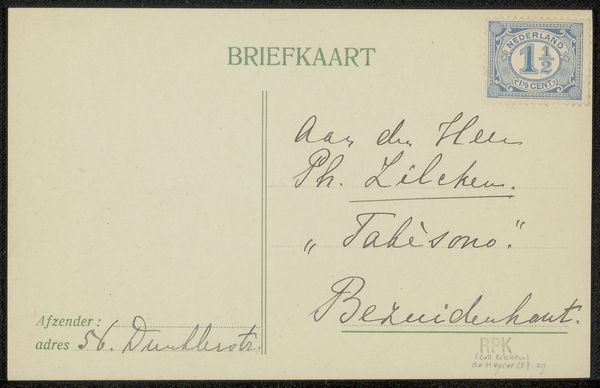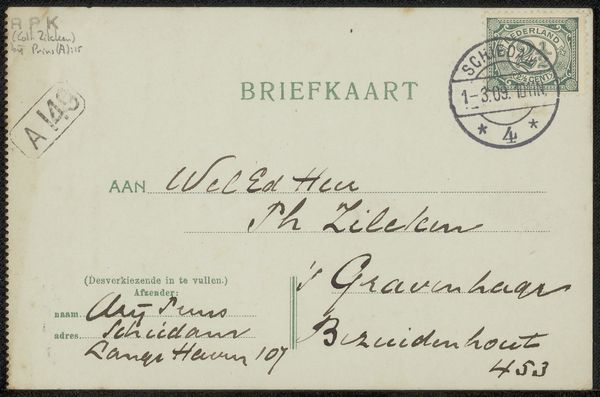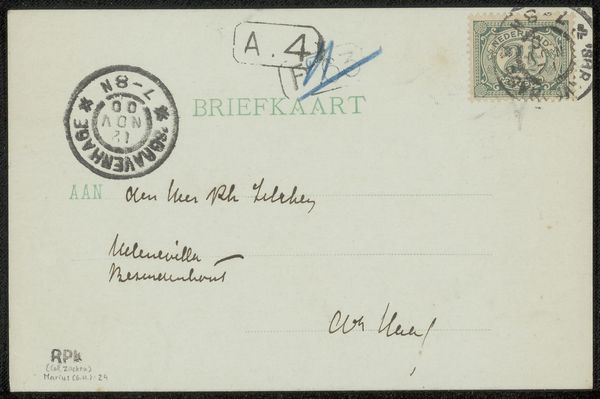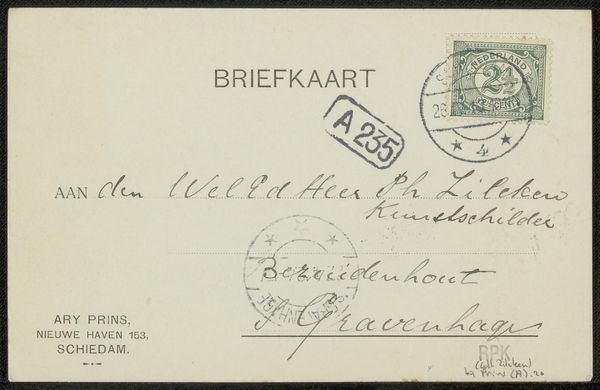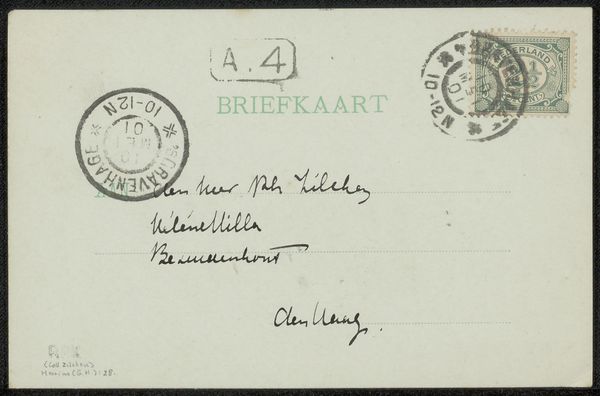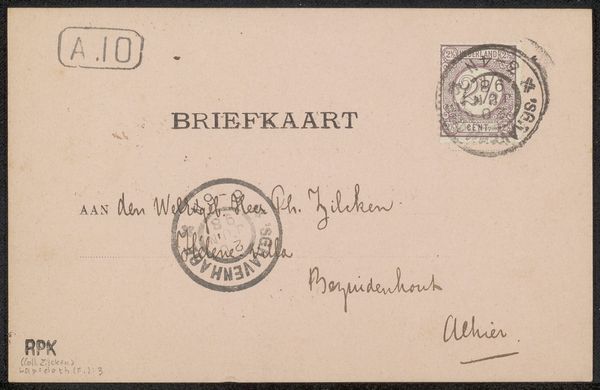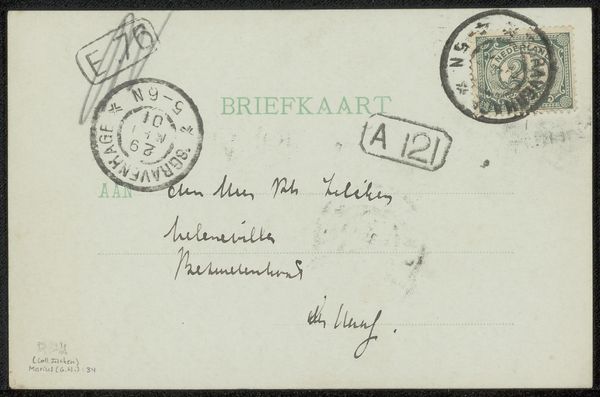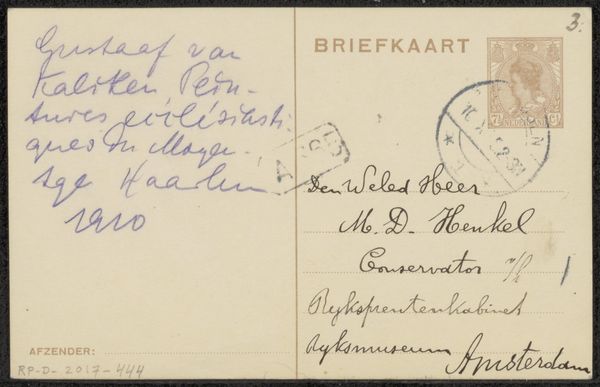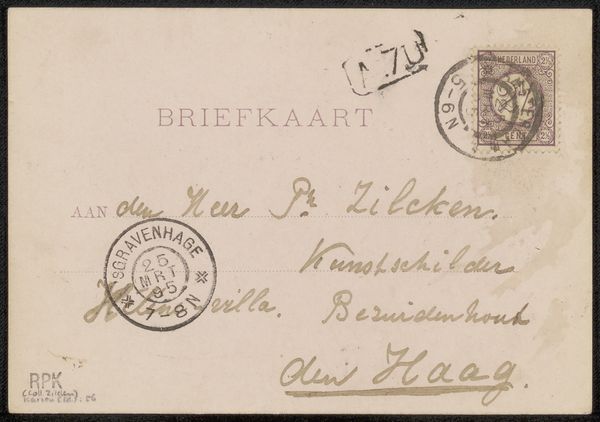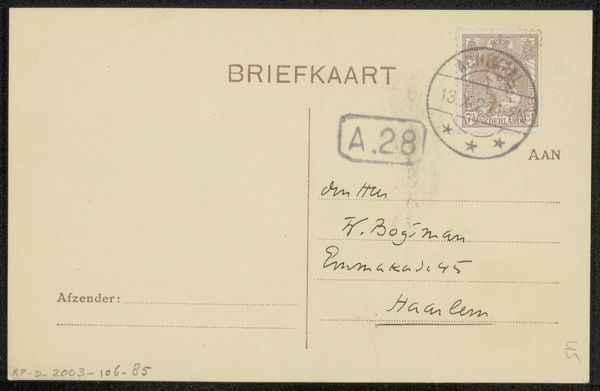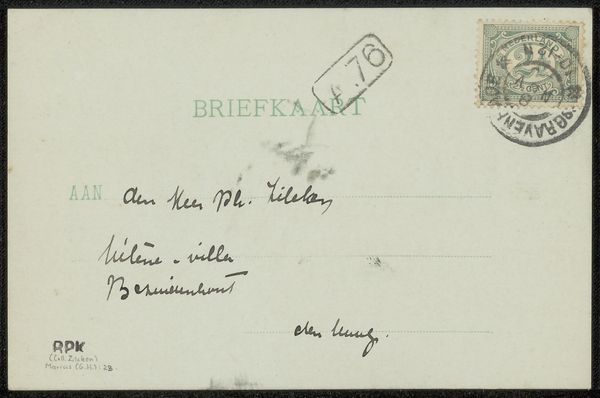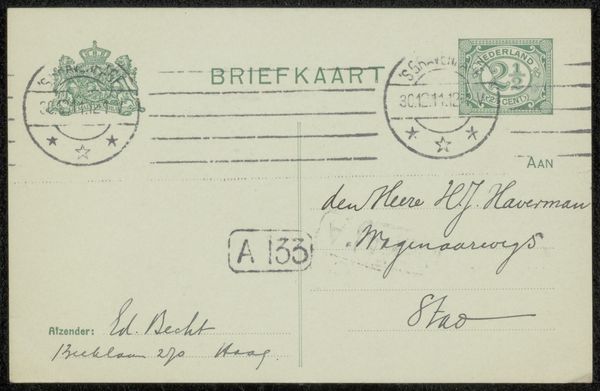
paper, photography, ink
#
paper
#
photography
#
ink
Copyright: Rijks Museum: Open Domain
Editor: Here we have "Briefkaart aan Philip Zilcken," a postcard, possibly from between 1903 and 1928. It looks to be made of paper with ink, and there’s a photographic element I assume comes from the picture on the other side. It’s just… a postcard. What can we even read into something so simple? Curator: A postcard is never *just* a postcard. They tell us about communication practices, societal literacy, and the visual culture of the era. This one, addressed to Philip Zilcken, offers insight into the social circles of the time. Consider the act of writing itself. Editor: What do you mean? Curator: Writing was much more formalized. The penmanship suggests a level of education and a dedication to presentation lost today. It’s addressed to a specific person in a particular location. Who *were* Philip Zilcken and Helene Aillw, and what was their place in society? The 'RPK' stamp suggests provenance: perhaps a collector who saw value in preserving this ordinary piece of ephemera. That collecting, in itself, shows that art and social history are connected. Editor: So you’re saying even something as mundane as a postcard becomes interesting once we consider its context and history. Curator: Exactly! The stamp, the address format – it's a snapshot of a bygone era's visual language and postal system. Each of these details can provide information for researchers exploring early twentieth-century culture and communication. Editor: That really makes you think. I would have just dismissed it. Curator: That’s why approaching art through the lens of its history makes the mundane into something compelling! We have to be cultural detectives. Editor: Thanks for illuminating what might otherwise have remained just an old postcard! I’ll look at such items differently from now on.
Comments
No comments
Be the first to comment and join the conversation on the ultimate creative platform.

